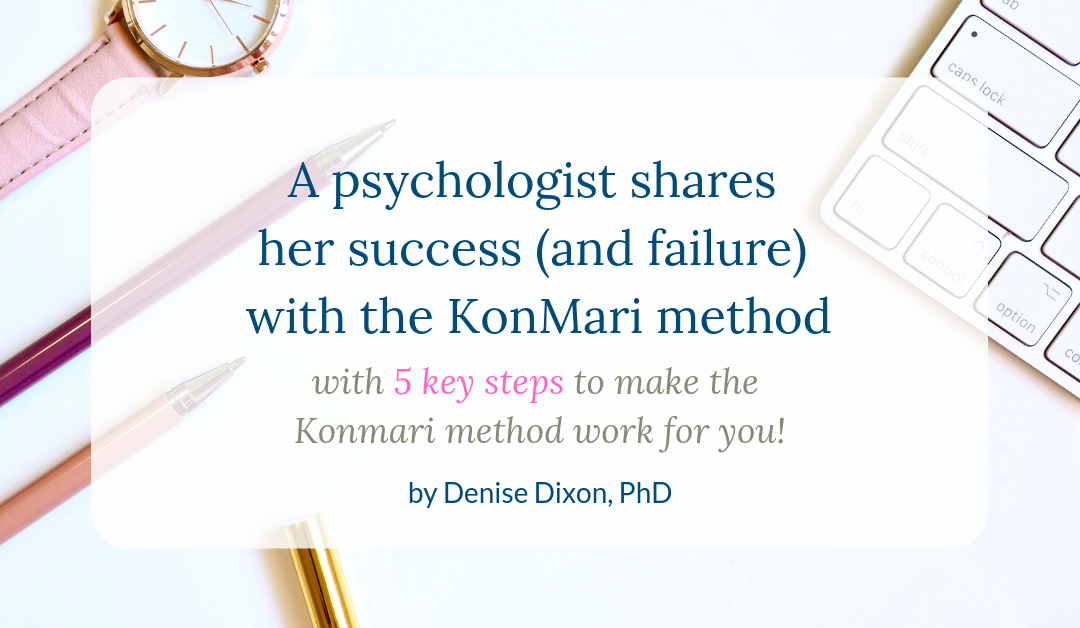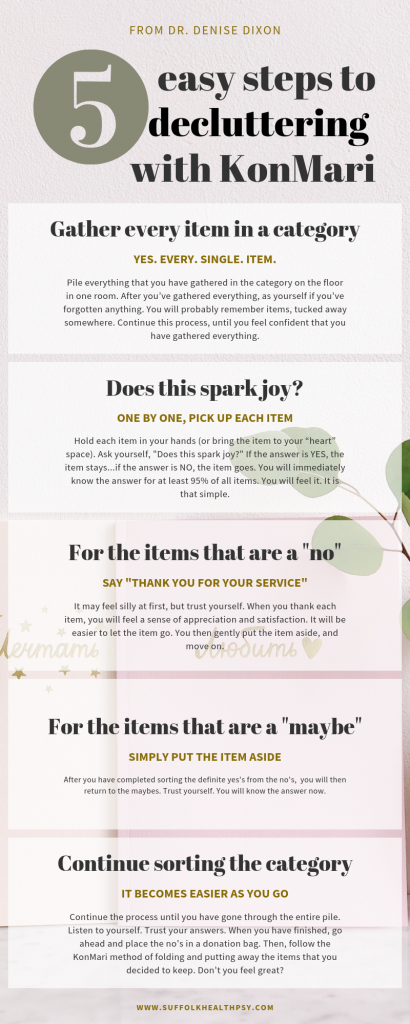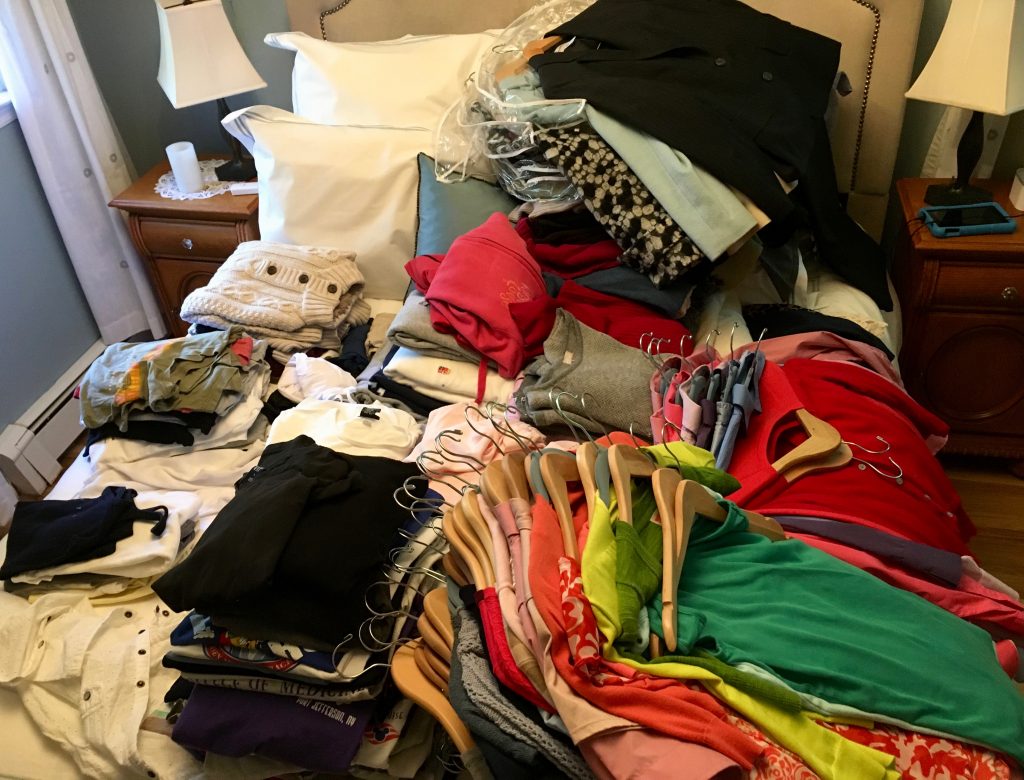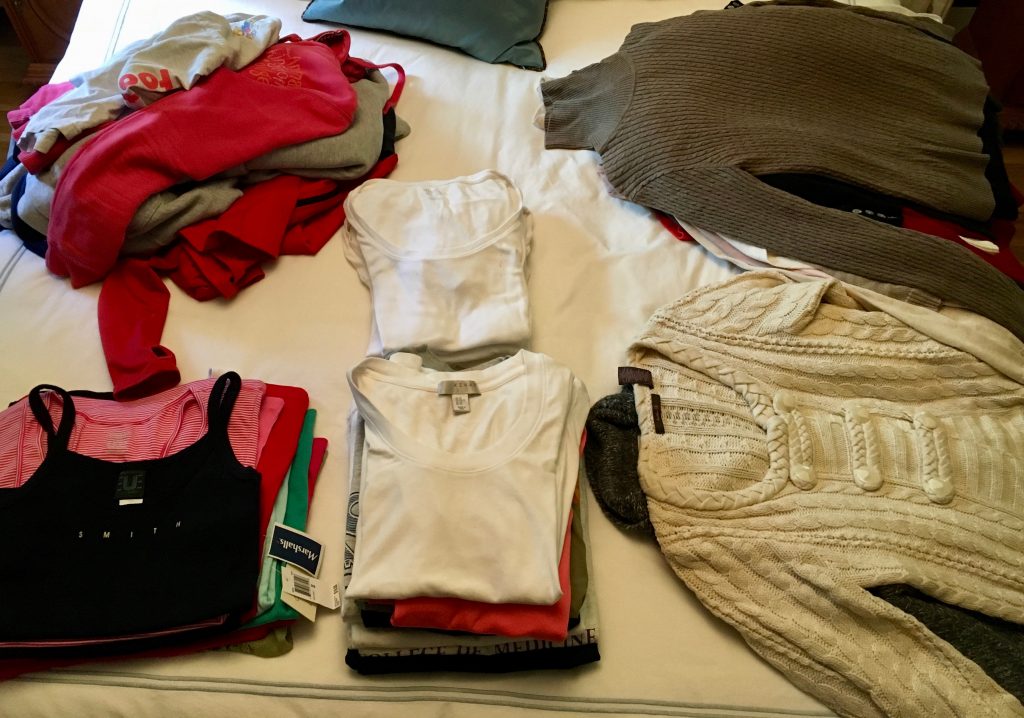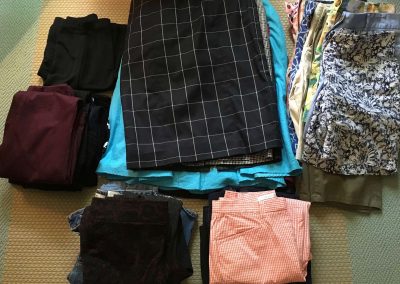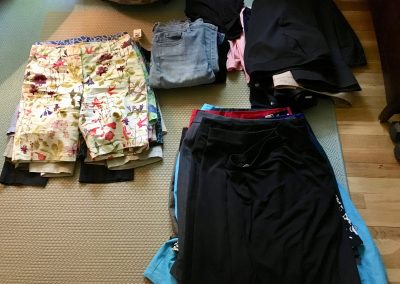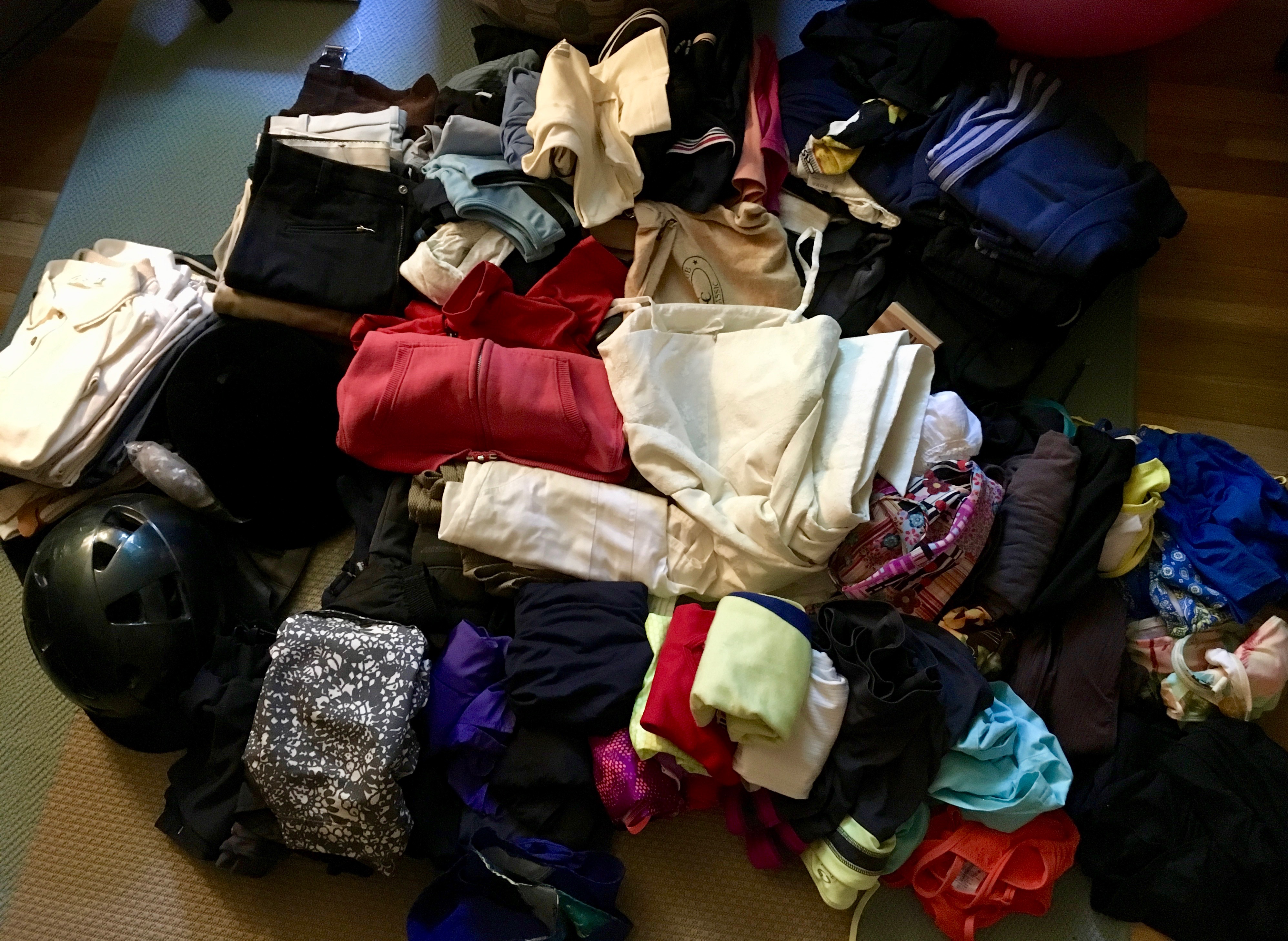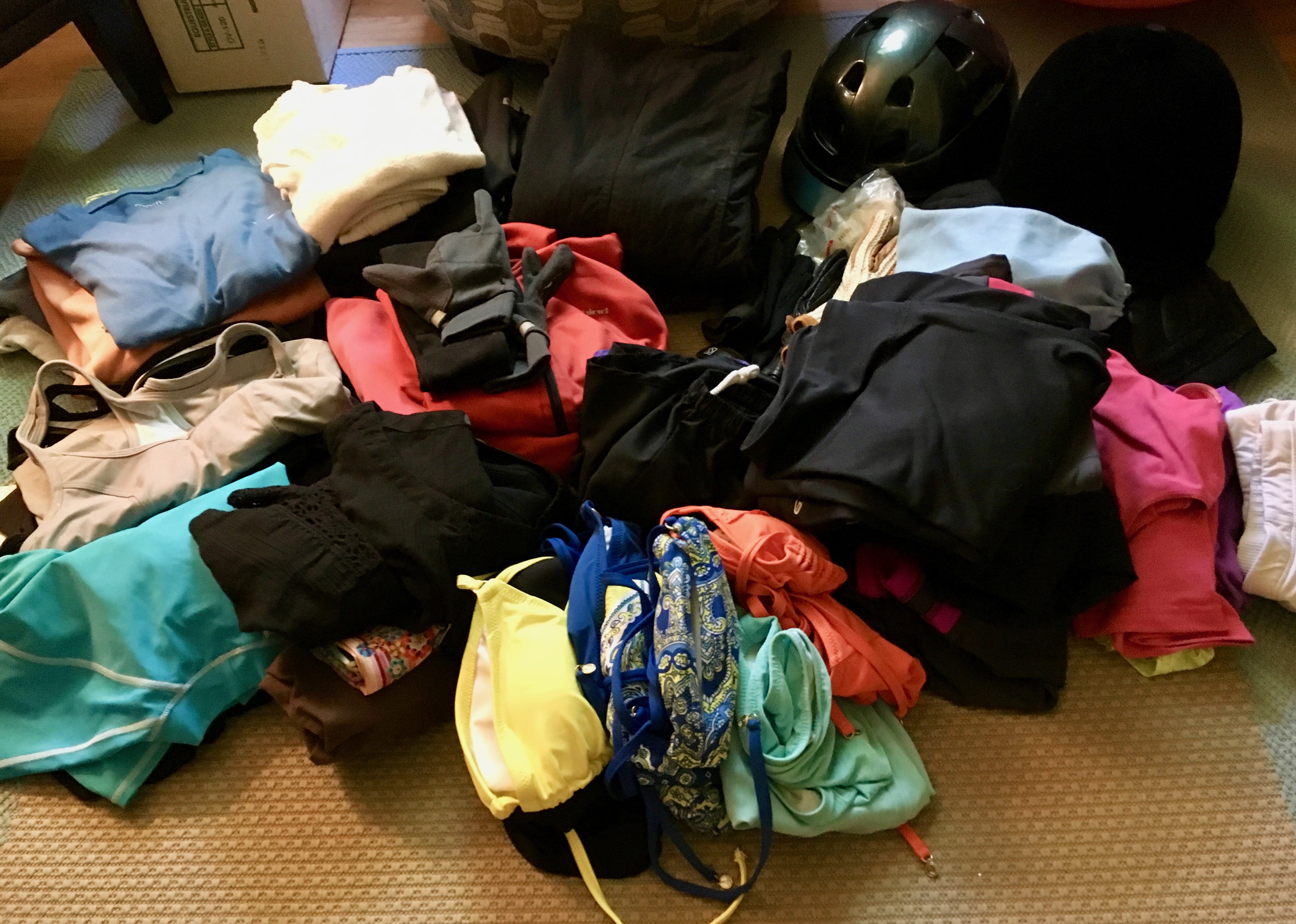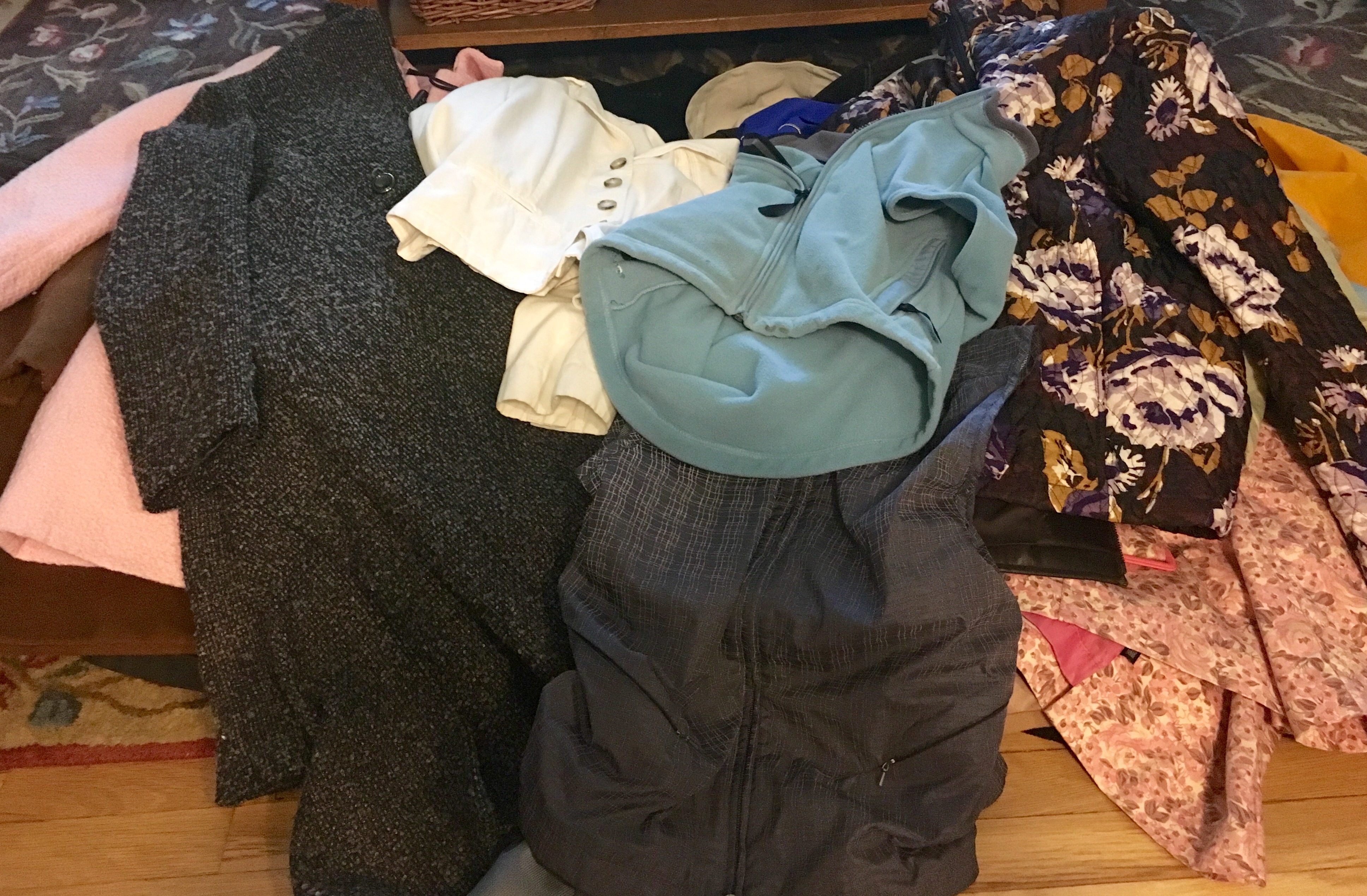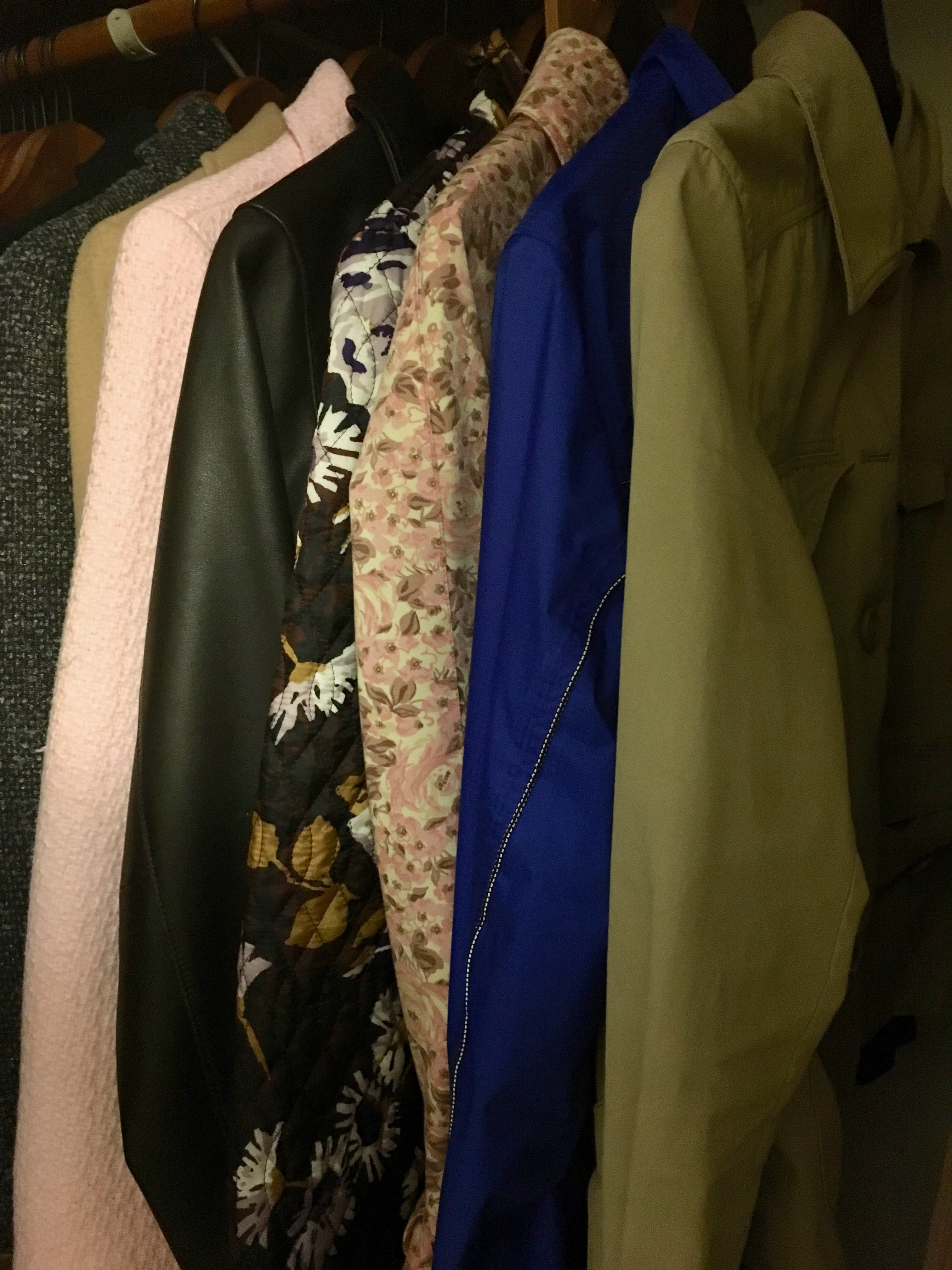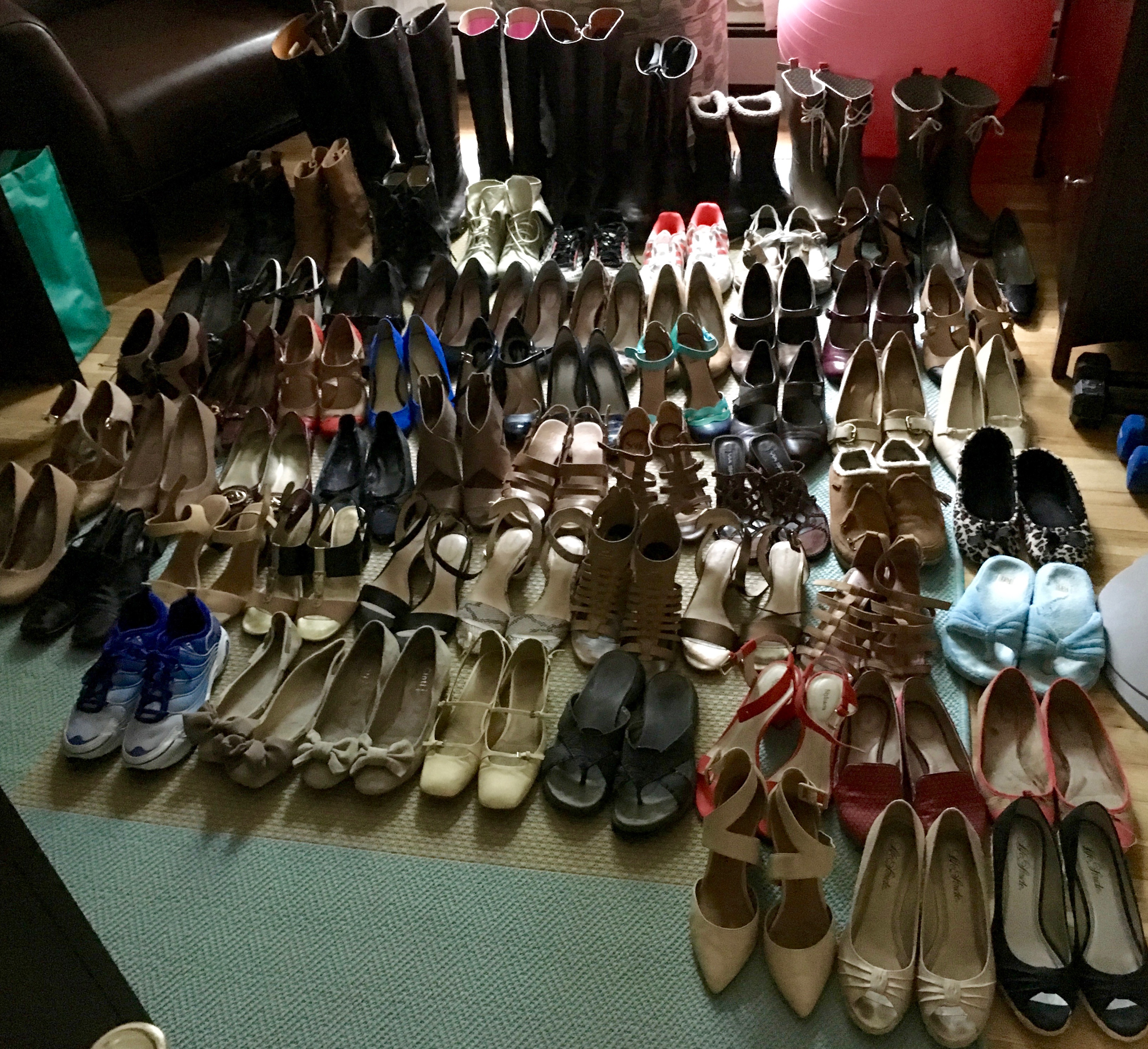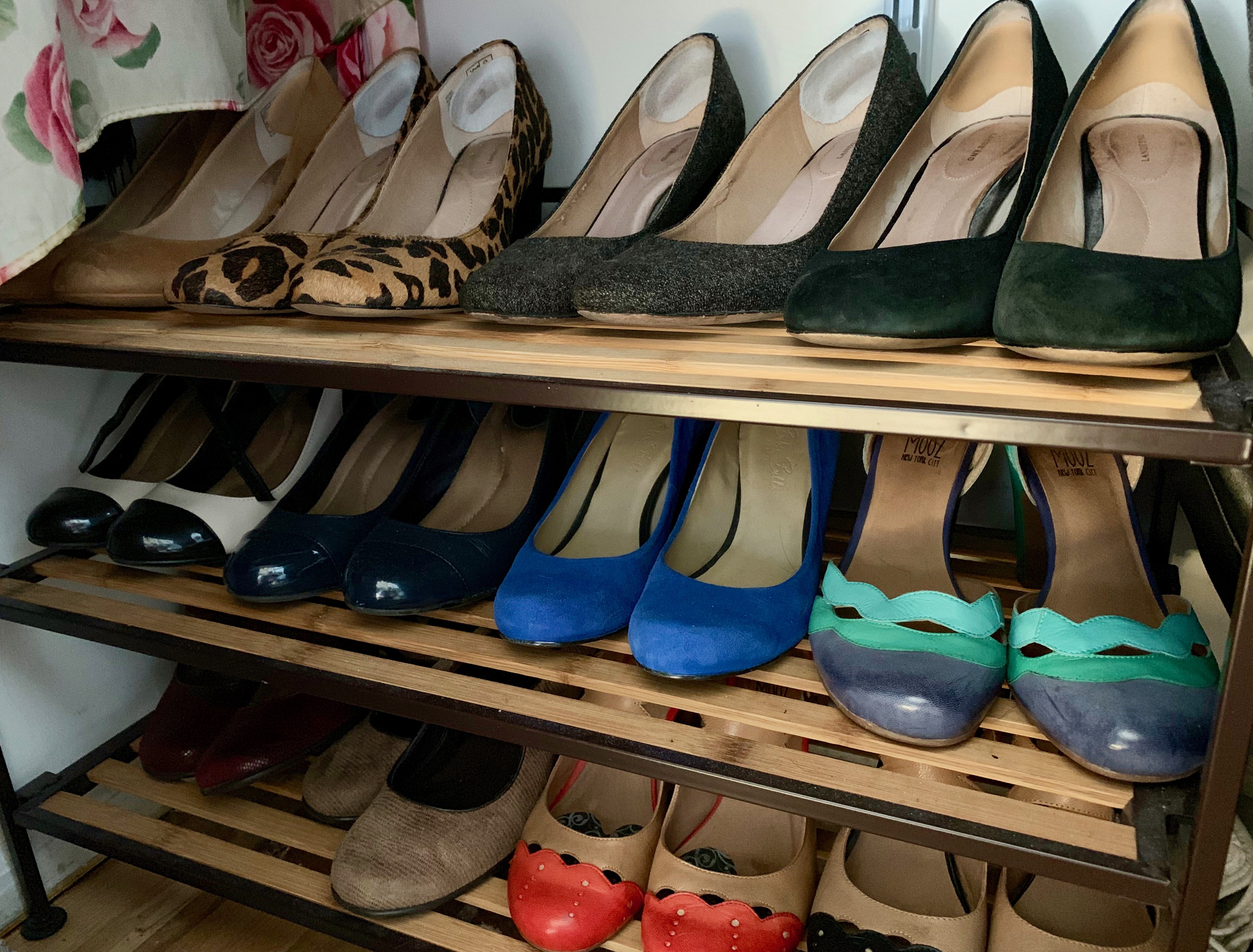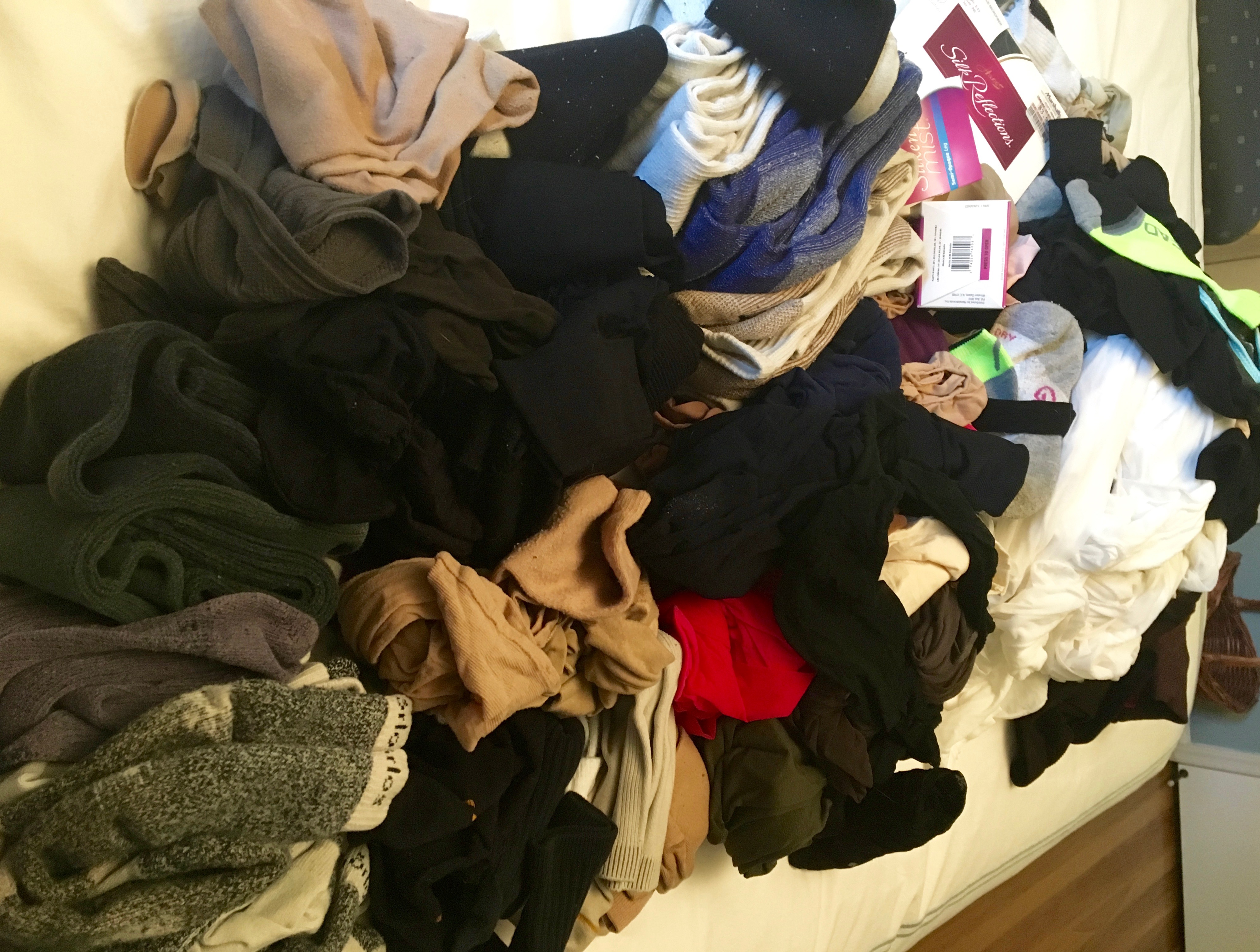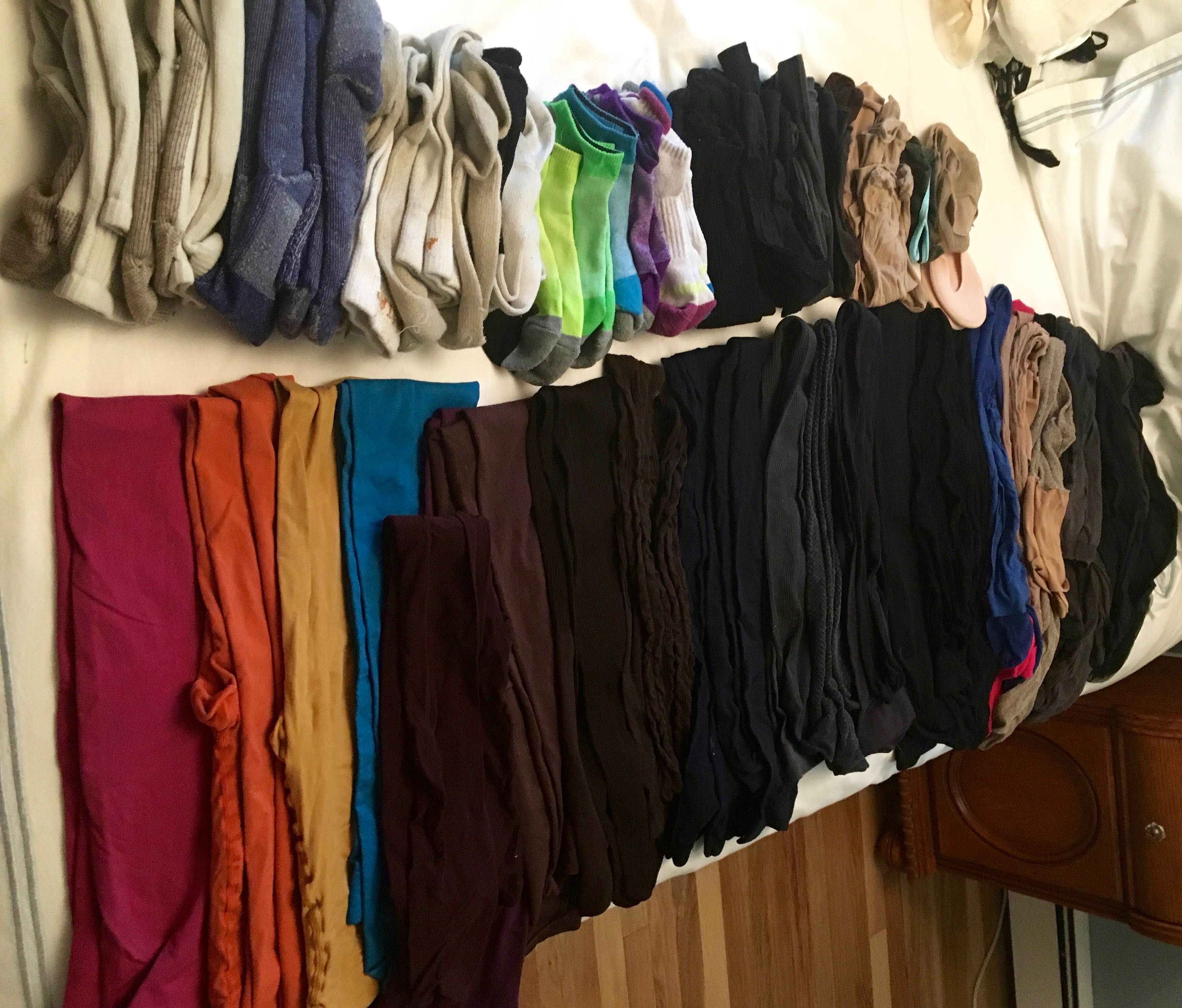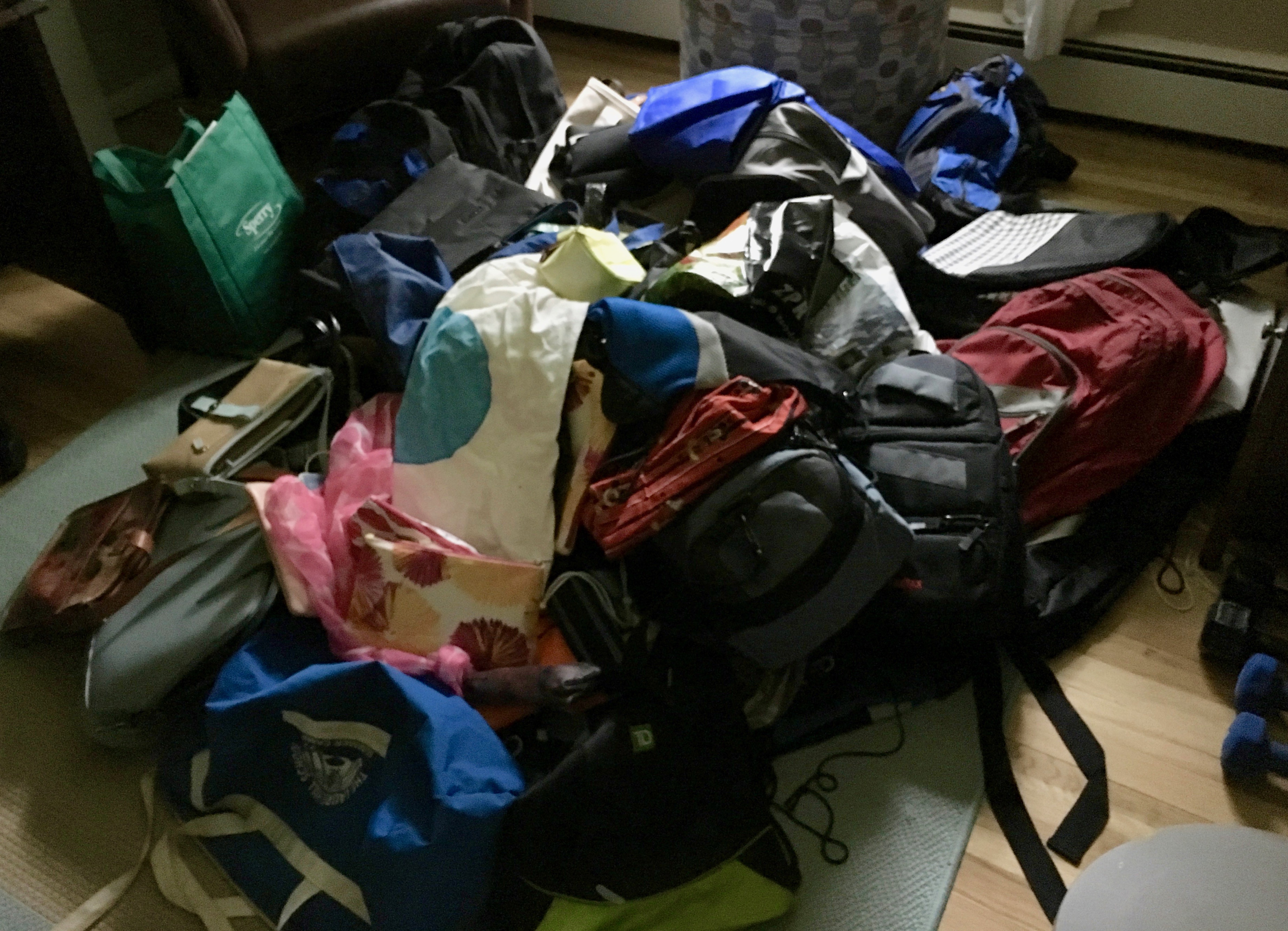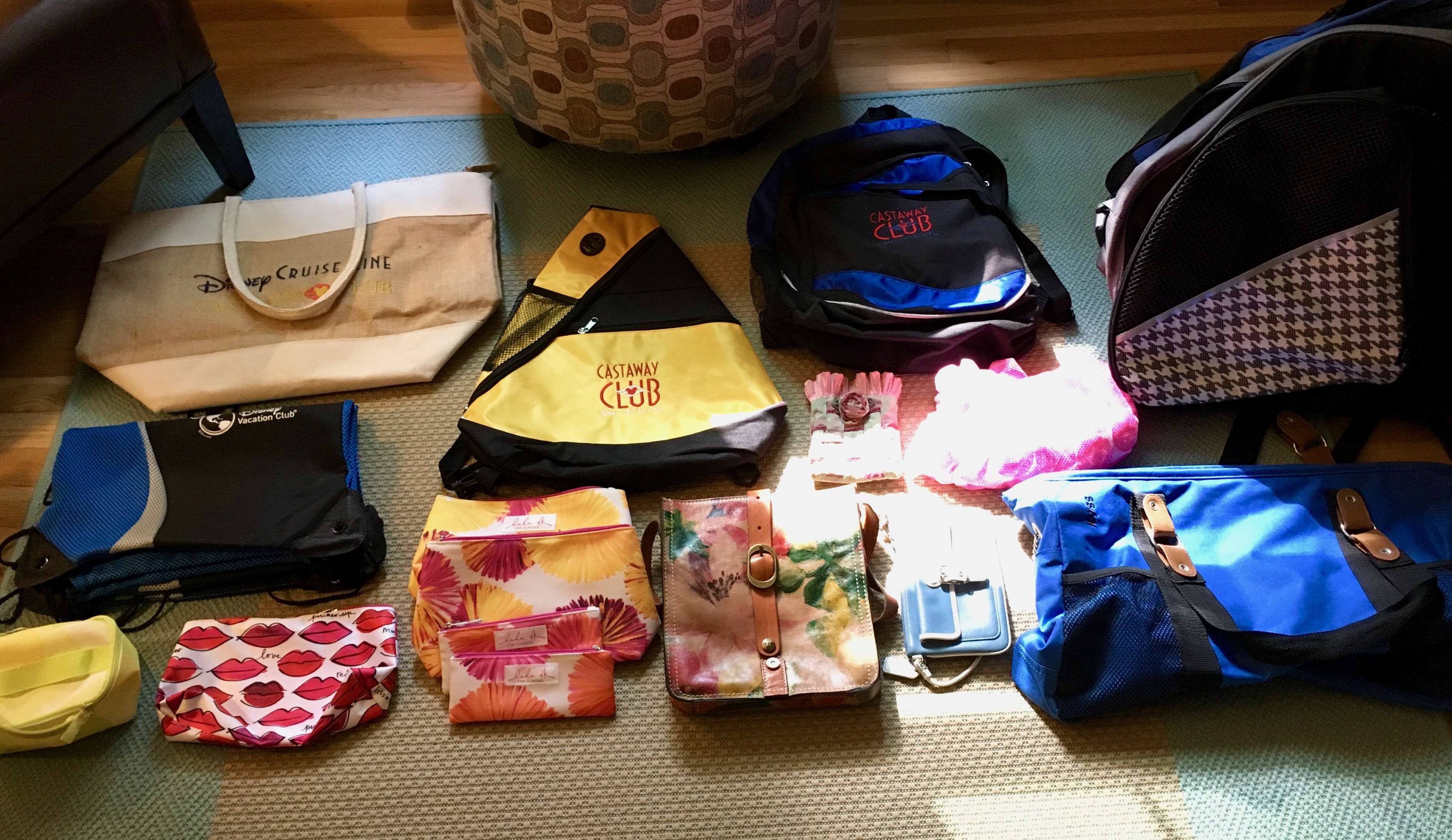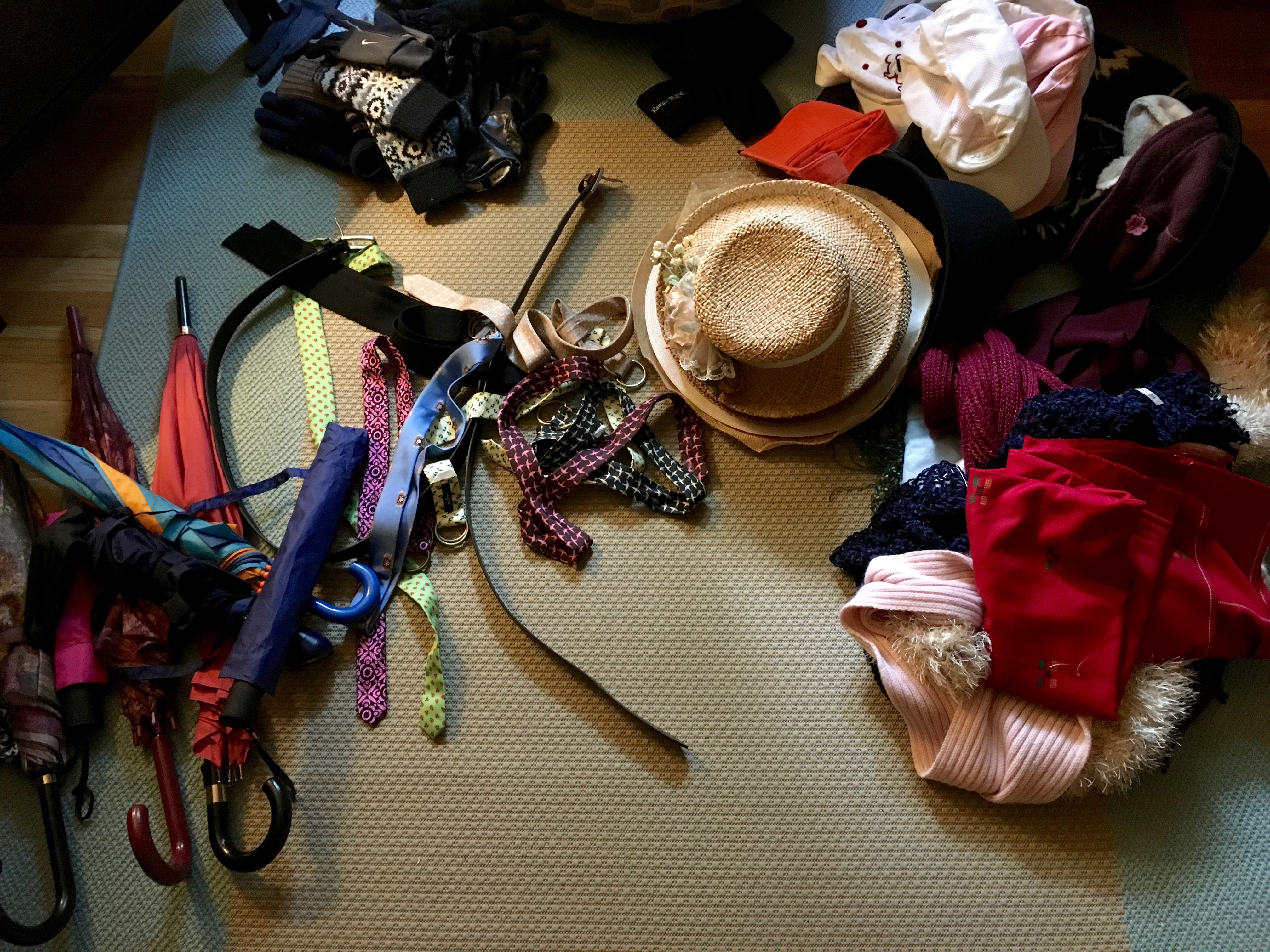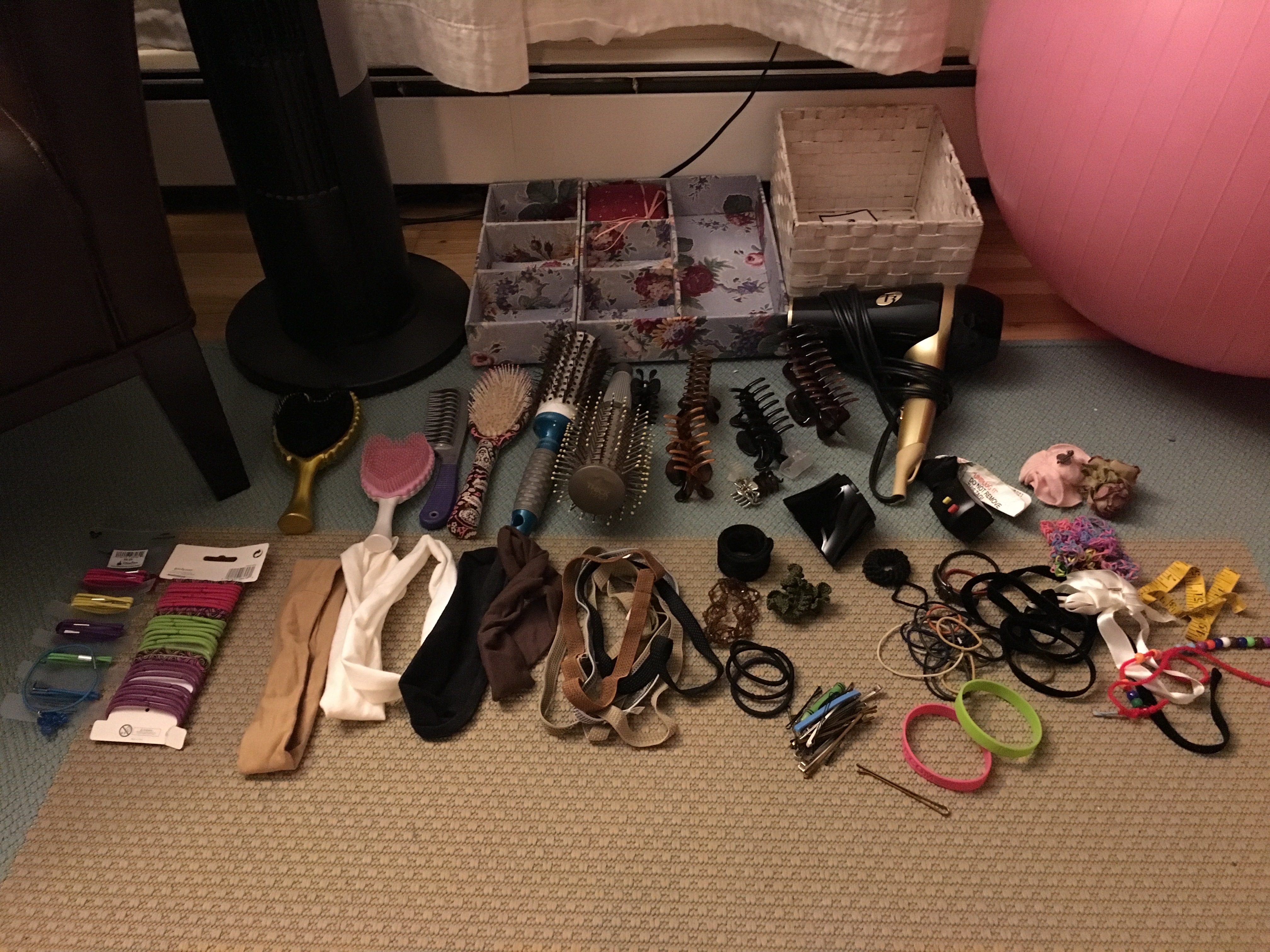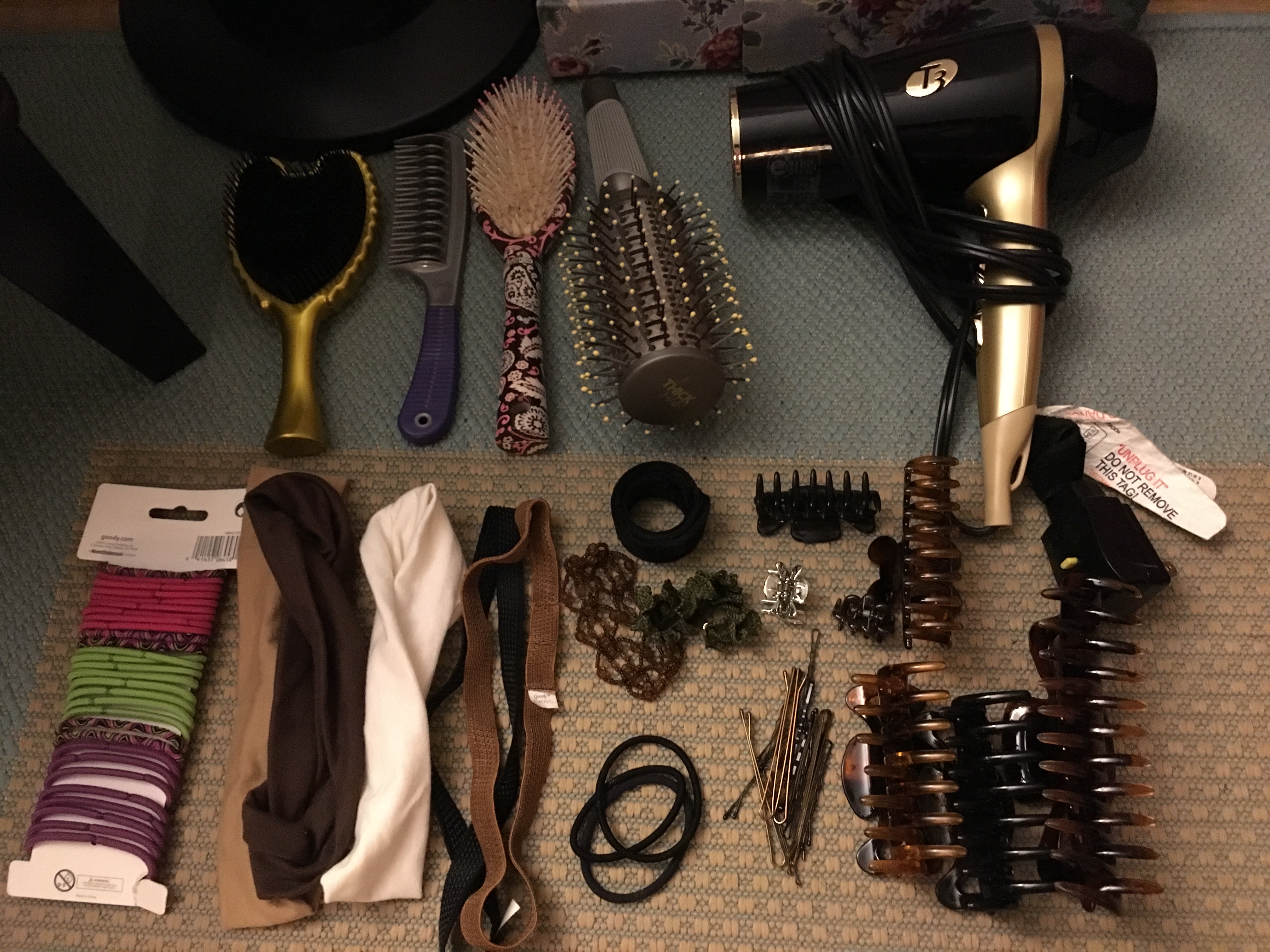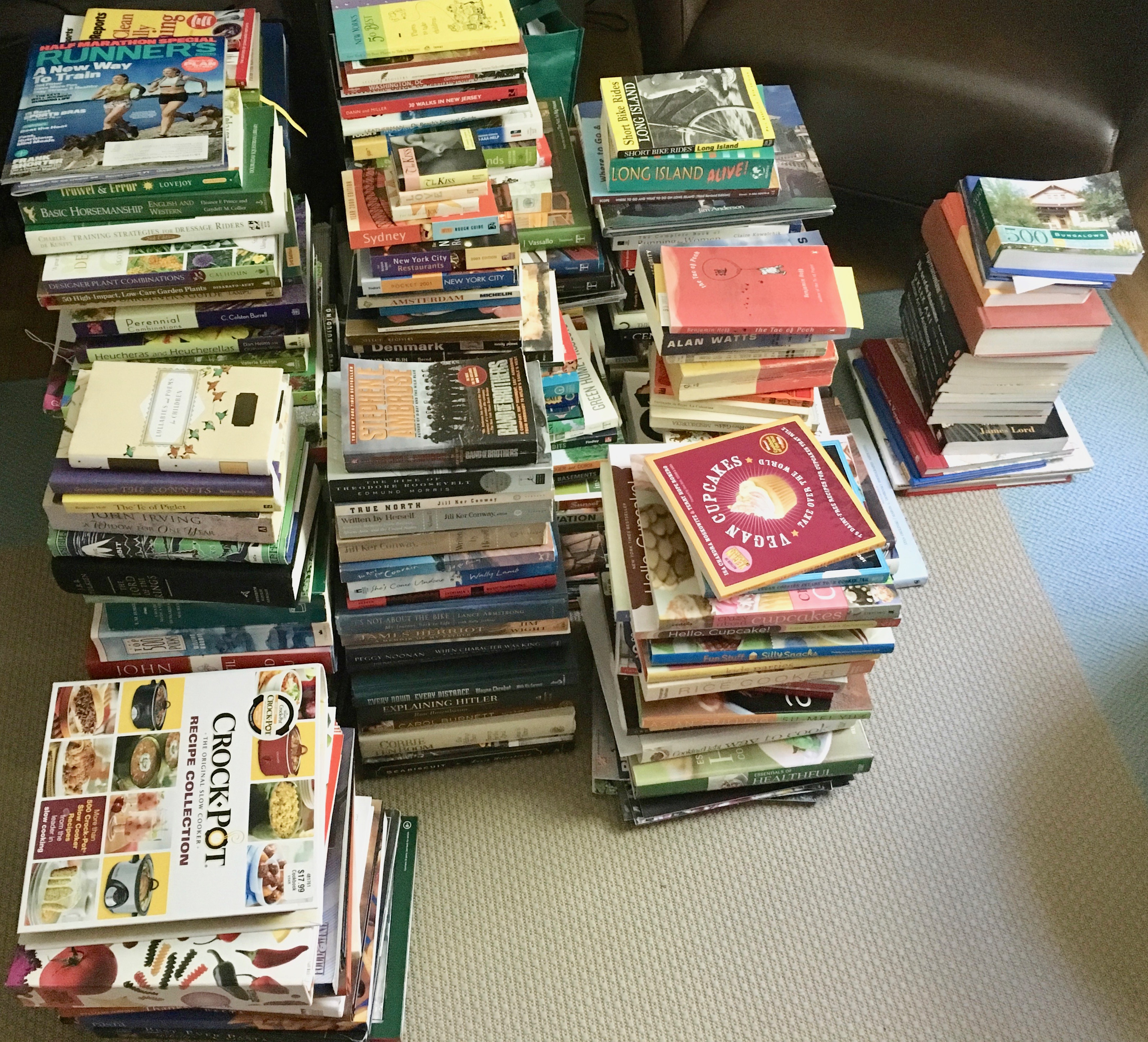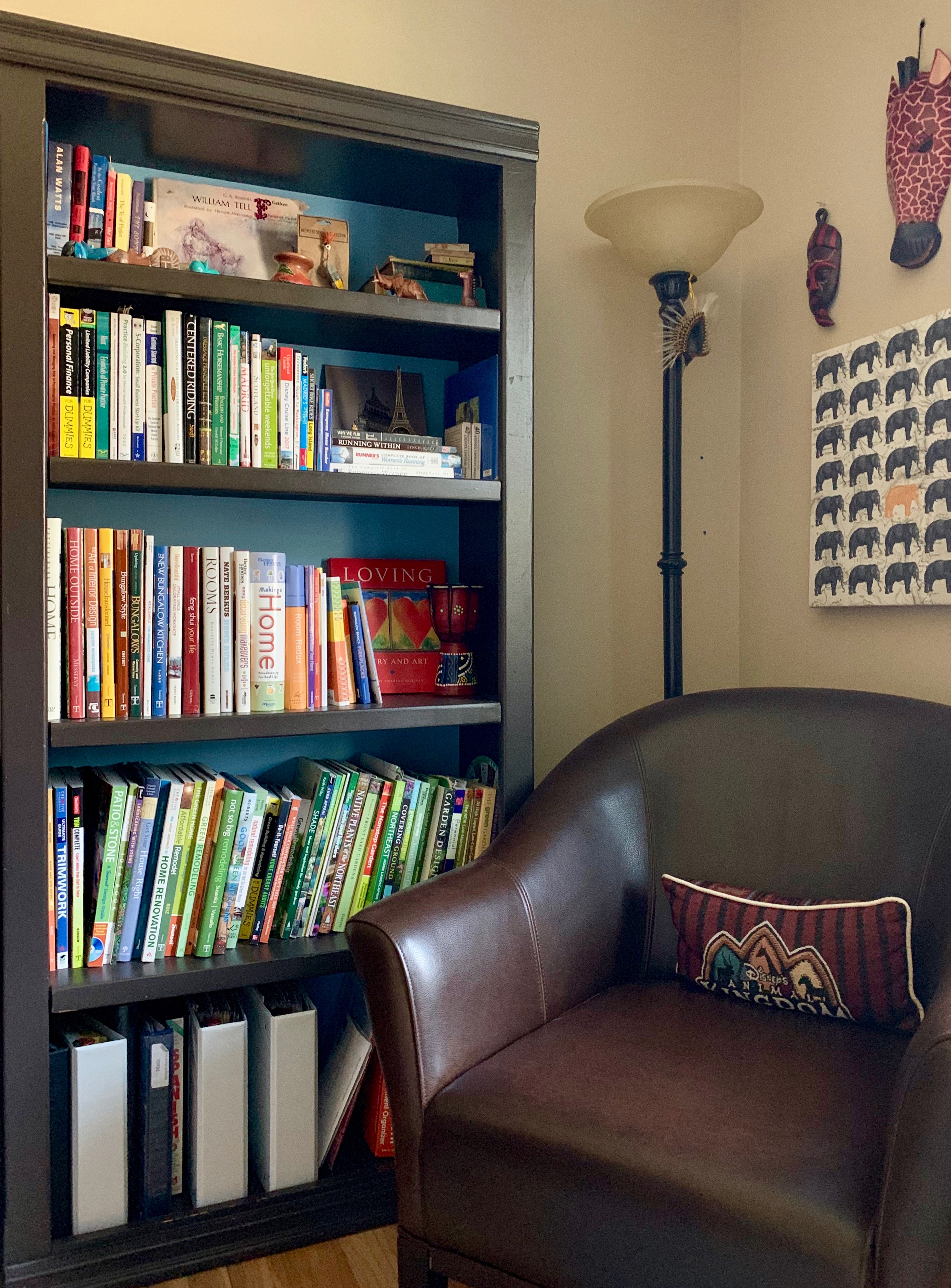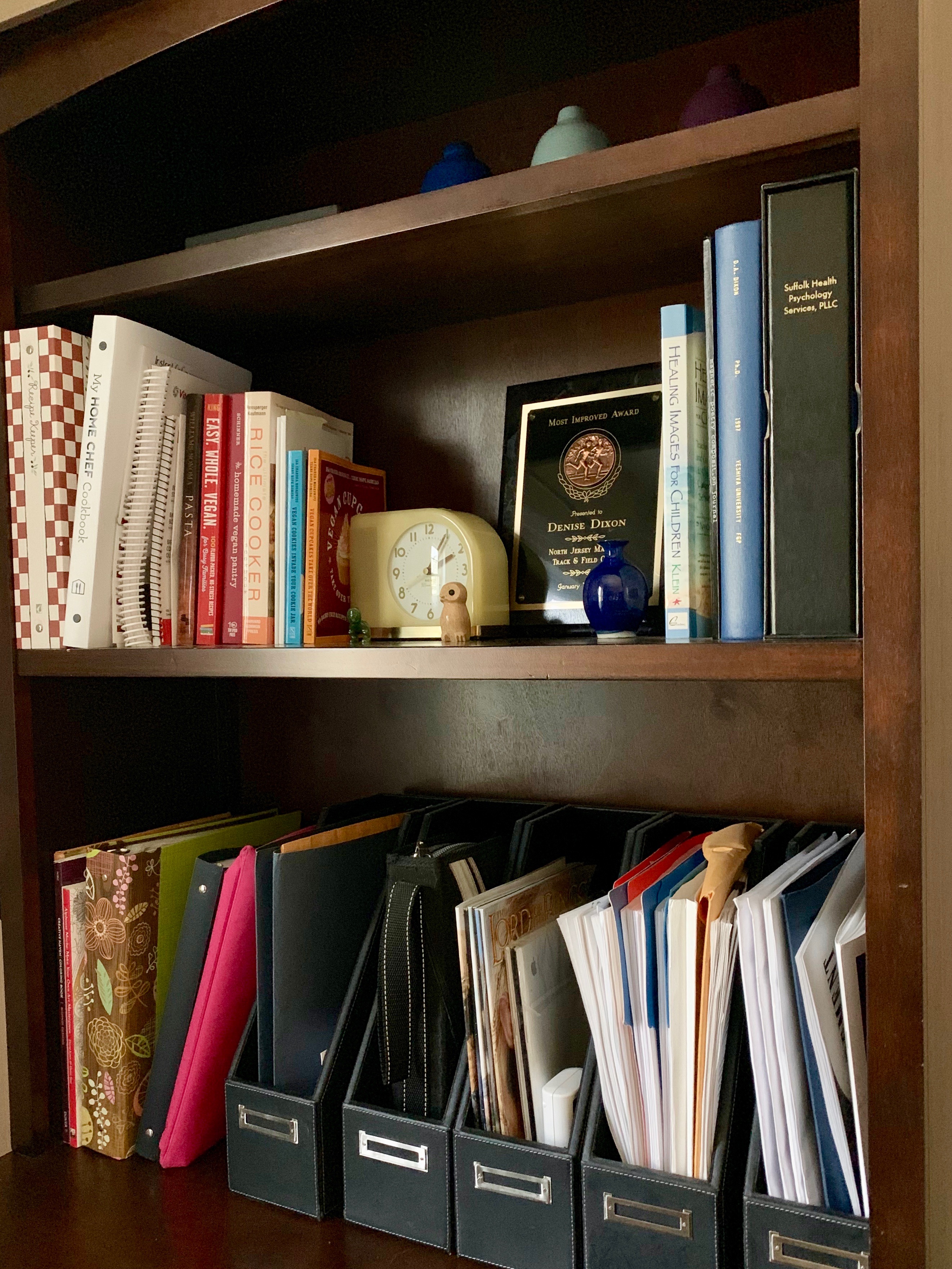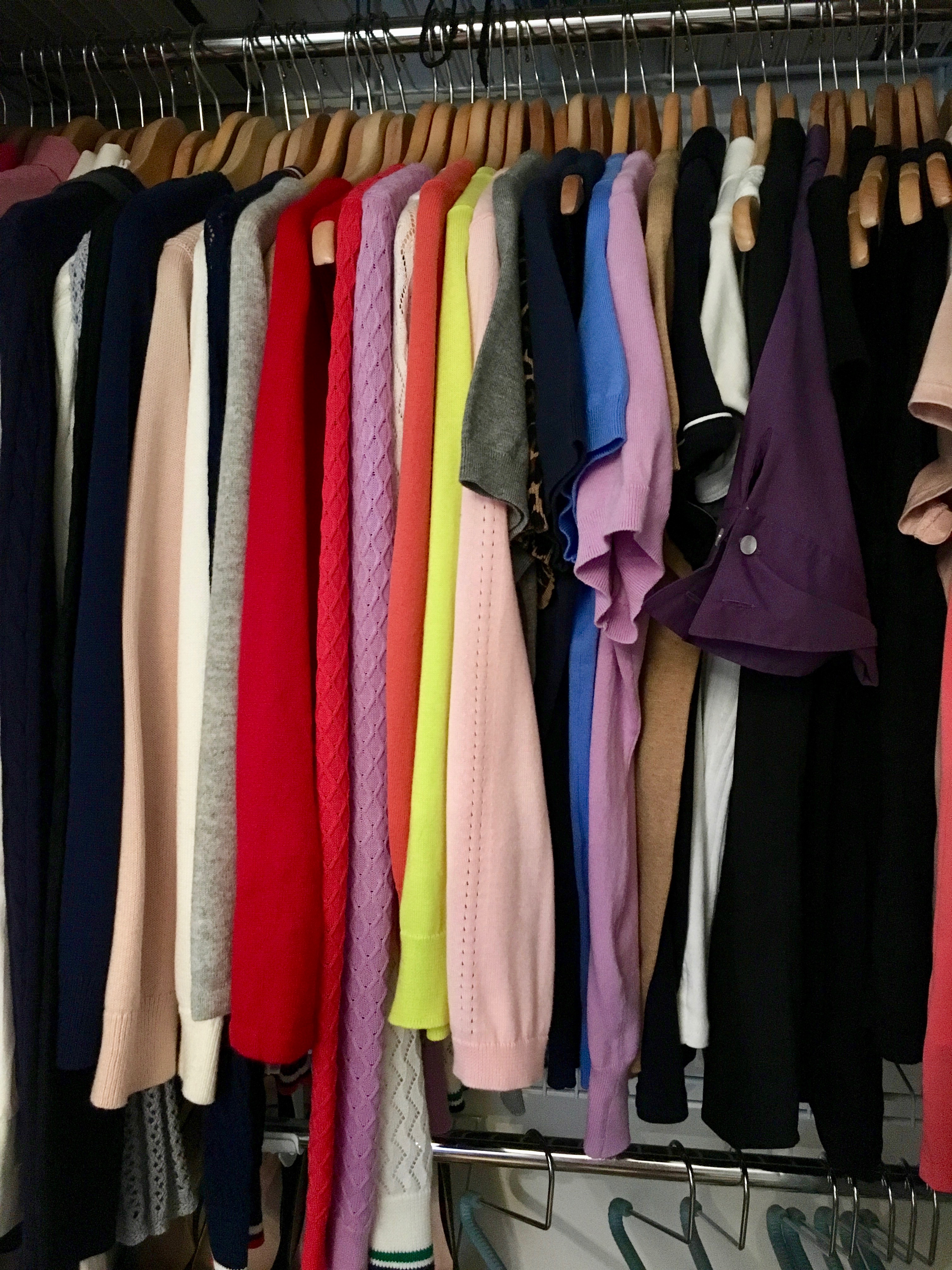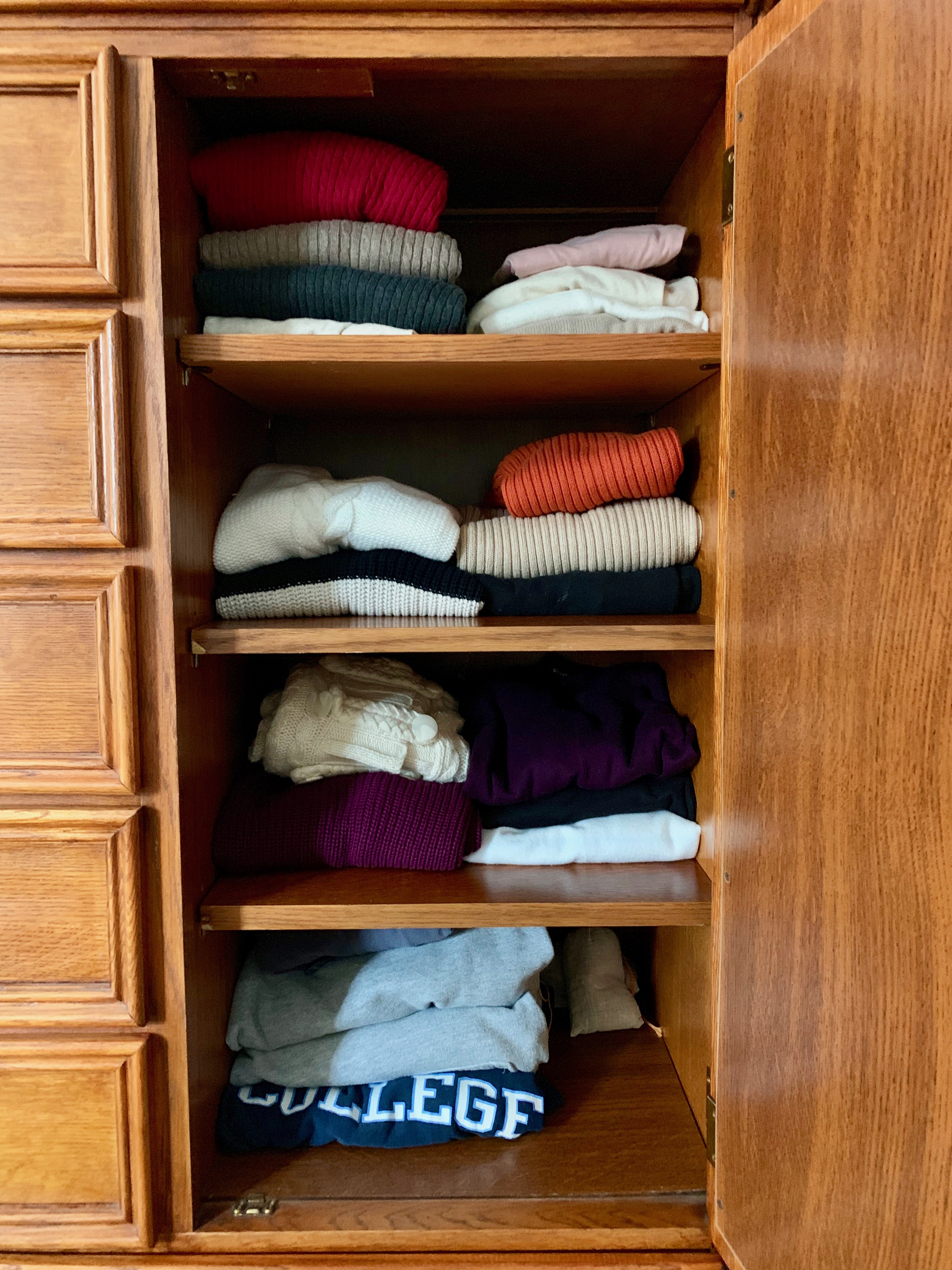In this second blog post (of a 3 part series), we continue to learn about my KonMari method journey. We will learn how I:
- dove into the process
- felt happy and energized, as I flew through the first 2 categories
- hit (and then overcame) a few major roadblocks (hello, paper!)
- learned several important lessons about how completing the KonMari process does indeed spark joy (through the magic of tidying)
- offer valuable tips on how to make the Konmari method of decluttering work for you
Let’s continue…
The KonMari method (a review)
Last week, we introduced ourselves to Marie Kondo, and the KonMari method of tidying.
Let’s review the basic steps to KonMari method, with this handy infographic (from the previous post):
In case the font is too small for you to read, you can refer to the previous post, where you can read through the basic Konmari steps, in a larger font.
RELATED: Does Konmari work? A psychologist shares her own journey towards sparking joy (part 1)
Now that we have reviewed the KonMari method, let’s see how it went.
KonMari, here I come…
During the week leading up to my first Konmari session, I prepared by continuing to read The Life-Changing Magic of Tidying Up, in addition to several online articles.
As I was starting on a Saturday, I first attended to routine household tasks (changing bed linens, laundry, cleaning, and gardening).
Later that day ( 25 June 2016), I set to work.
The first category was tops. I gathered every single top that I owned, emptying my closet & dresser drawers, and digging items out of seasonal clothing. After I felt reasonably certain that I had remembered everything, I piled them on my bed.
Oh. My. Gosh!
Was this for real? Did I really own over 200 tops?
I could not believe my eyes. And yet, it was impossible to deny the mountain of clothing, piled on my bed. See for yourself:
A wave of overwhelm washed over me. I felt disheartened and defeated, even before I had started. It seemed as if I would need the entire day (and night) to sort such a gigantic pile!
Are you kidding me? Why did I start so late? I’ll never finish this. I’ll end up sleeping on this pile of clothes. This sucks.
Okay. Catastrophic thoughts acknowledged. Moving on…
I took a deep breath, and determined to crack on. After all, I was not going to sleep on (or move this pile of clothing to), the floor!
Guess what? I was able to sort through the entire pile, in twenty minutes.
That’s right – twenty minutes. Here is a photo of the items that I kept, after sorting through the first piles:
Not too shabby, right? If you look closely, you will notice that some tops still had tags attached! I had so many tops, that I had not even noticed my “new” clothes! Geesh.
However, after this first pass, I realized that I had not followed some basic guidelines of the KonMari method.
I had not:
- begun with the assumption that every item would be discarded (and only cherished items would be retained)
- placed the tops on the floor
- removed every top from every hanger
Only later did I realize the importance of the last part — removing all items from hangers. I realized that keeping item on hangers prevented me from severing my emotional attachment to each item. Also, keeping tops on hangers seemed to interfere with my ability to “feel for” the “joy” criteria.
In spite of my “improper” first pass, I still managed to fill 2 large garbage leaf bags with tops. This, despite the fact that I had already “purged” my closets, a year prior.
That night, I fell asleep, satisfied that I may have stumbled upon a potentially life altering process.
RELATED: What is sleep hygiene, and why is it so important?
Just keep swimming. Just keep swimming… through the Konmari categories.
In all, I felt fairly impressed with my first attempt. I decided to continue the process the following weekend. I looked forward to completing the next sub-category: bottoms. Here are before and after photos:
I know, not that dramatic. It was super easy to breeze through the 6 categories during that same weekend, despite the need to squeeze the Konmari method into weekends that were already filled with other household tasks and errands.
Nevertheless, I persisted.
During each week that lead up to each subcategory, I followed the same pattern of preparing, by reading Ms Kondo’s book, and more blog posts. This preparation helped me to plow through all of the “clothing” subcategories, over four consecutive weekends.
Here are some more before and after photos, showing the progression through each of the clothing subcategories:
Whew! It felt great, to complete the entire clothing category in one month. Previously crammed closets and drawers now had breathing room. Everything felt lighter. My bedroom felt lighter. I felt lighter.
We’re moving on up… to the Konmari books category
Over my lifetime, I have earned a fair number of academic degrees. Plus, I have always been an avid and voracious reader. I love, love, LOVE my books! Which means that I had accumulated a library that contained HUNDREDS of books. As a result, I knew that I would need a carefully crafted strategy, to get through this category.
I started by breaking the books categories down into subcategories:
- General (literature, nonfiction, fiction)
- Practical (cookbooks, gardening, home design & improvement)
- Visual (coffee table books)
- Academic/Scientific
- Workbooks
- Magazines
I piled every book on my desk and floor in my home office. Also, I followed Ms. Kondo’s advice of simply holding — but not opening — each book. This was a tricky process for a book lover to navigate!
Here are some more photos:
Okay, books done! Hooray! I was feeling exhilarated and confident.
I’ve got this!
Until I hit the papers subcategory…
SCREECH….. BAM!
I hit the wall.
As an academician for the majority of my career, I had accumulated a ton of paper. Mountains and mountains of paper.
Mind you, every single piece of paper had been neatly and efficiently filed away, in file cabinets, boxes, and organizers, all throughout my house (and basement). As a result, it took several months, to pull all papers out, make piles, shred sensitive documents, and then pack the remaining paper into file boxes for recycling.
No photos here — trust my word, that I packed over 20 boxes of paper for recycling, and discarded over 15 lawn & leaf bags, filled with shredded documents.
Exhausted, I took a (year-long!) hiatus from the process, returning to the Komono (miscellaneous) category nearly a year later, starting with the Bathroom subcategory. From there, it was very easy to march through the entire Konmari Komono category (broken down into subcategories), over the next several months. Again, on available weekends.
The results
After you have finished going through the entire pile, Ms Kondo provides clear and concise directions on how to store all of your belongings in a way that makes them very easy to access — but more importantly, easy to put away.
As far as clothing, everything that I own is now artfully arranged, in my (suddenly) spacious closet and dresser drawers. There is no longer a need to store extra or out of season clothing in “overflow” closets, or in the basement. All of my sweaters are neatly folded, and looked gorgeous, in my wardrobe. The drawers now look so colorful and inviting!
Here are some more photos, this time showing the final results of putting away items after they have all been sorted, folded, hung, and stored, according to the KonMari method:
Similarly, the other rooms in the house are now very neatly organized, with items that are both easy to access, and easy to put away. The entire house feels lighter, more spacious, cleaner, and calm. Yes, it is a joy to return home each day, after work.
And, I have discovered that I did not need more closet space, or better systems of organization. I simply needed less stuff.
What didn’t work with the KonMari method, and how I changed it
So, what were some of the roadblocks?
First, I discovered very early, that the idea of going through the entire house in a very short time period, was not feasible. As much as I wanted to, I would have needed 1-2 months vacation leave, to accomplish this gigantic undertaking!
I understand that Ms. Kondo has since softened her approach, in this regard.
Therefore, I decided very early on, to take my time. And to forgive myself (in advance) for taking such a long time (nearly 2 years, with various starts & stops), to complete the entire process.
Secondly, each major category was waaaaaaaay too large, which caused me to feel completely overwhelmed, before even starting.
To combat this overwhelm, I followed my own advice (that I have provided to client/patients):
Overwhelm? Break it down!
Denise Dixon, PhD, Health psychologist
Breaking down categories into sub-categories helped tremendously by creating a bit of relief, and by providing a tangible sense of accomplishment, when finished. Creating a master checklist helped even more.
Lastly, going in, I had no idea just how much I would be derailed by the paper category. That was a real shocker… and eye-opener. I suppose that we each have our own sticking points, right?
How to make the KonMari method work, for you…
1First, do not skip the critical step of asking yourself why you want to embark upon this journey of keeping only those items that speak to your heart, while letting go of the rest!
Keep asking yourself, “Why?” until you have drilled all the way down, to the very heart of the matter. The “why” will help you to keep moving forward, whenever you feel overwhelmed, and want to quit. Also, knowing your “why” will provide you with direction and focus.
2Before you even begin, give yourself permission to take your time with the process.
Prepare yourself by reading Ms. Kondo’s book(s) from cover to cover, and then reading as many blog posts, if that is your desire.
3Sort in silence, and alone. Try to be home alone as you sort your pile. Feelings will run high, and you don’t want to be distracted by someone else’s idea of what is (or is not) important to you. It is very likely that you will feel all kinds of feelings surfacing. Lean into them. Breathe through them. The anxiety, the guilt, the regrets… to the satisfaction. Perhaps, with practice, the joy.
After you have piled all items in a category, it is very important that you begin with the assumption that every item will be discarded (and that you keep cherished items).
Make it an event, and spend some time visualizing the process, including the anticipated sense of satisfaction that imagined you will feel, upon completing each category.
4Be sure to dispose of all discarded items to donate, recycle, or trash, as soon as you have finished each (sub)category. Otherwise, you may risk getting overwhelmed (is this a theme?) with these errands.
Remember to store items so that they are easy to put away, not so that they are easy to take out.
5No need to spend extra money on fancy boxes and bins! I followed Ms. Kondo’s advice, by saving sturdy boxes from previously purchased belongings. Worked just fine!
That’s all, dear blog readers. I hope that you enjoyed this blog post!
In the next blog post, we will review some final thoughts about potential side effects of completing the KonMari Method of decluttering. For now, I leave you with yet another helpful infographic:
Denise Dixon, PhD
Health psychologist
Dr Dixon is a licensed psychologist practicing in New York State. Her contagious enthusiasm for sharing the science of health & behavior has earned her the nickname of “Dr. Smiles.” Dr Dixon also finds joy in motherhood; travel; outdoor sports; singing; piano; and cooking delicious (vegan) meals.
Free KonMari Checklist!
I created this FREE (2-page), highly detailed & comprehensive KonMari Checklist, to help me break down the… ahem… massive KonMari categories, into (much more) manageable sub-categories.
Do you have a suggestion for a blog post? I’d love to hear from you! Simply click here to tell me all about your idea. Thank you!
Purchase links provide a very small affiliate commission, without any additional cost to you.

